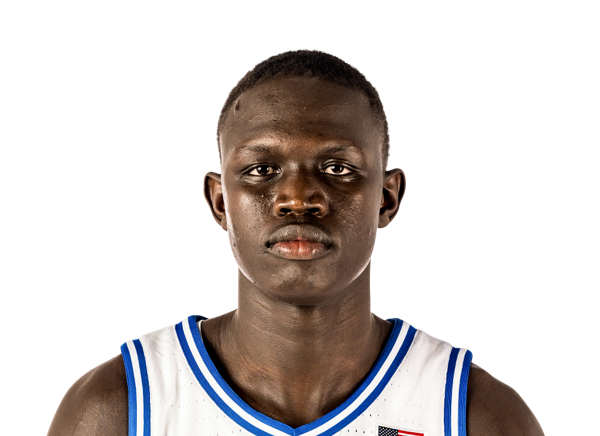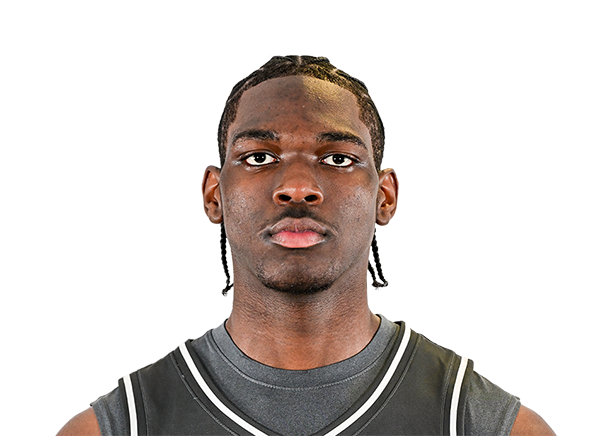Detailed Analysis
Offense
Derik Queen operates with a level of poise and sophistication rarely seen in freshman bigs. Offensively, he is one of the most skilled and creative post players in this class, with a well-rounded game built on elite feel, touch, and processing.
Scoring Versatility:
Queen is a multidimensional scorer whose game blends finesse with physicality. He’s particularly effective from the elbows and the low block, where he employs advanced footwork, drop steps, spins, and pivots, to create scoring angles. Despite lacking elite vertical pop, he finishes well at the rim due to his soft hands, wide base, and ambidextrous touch. He shot 68.4% at the rim and an impressive 78.9% on cuts and close-in finishes in the half court, showing an ability to convert in traffic and absorb contact.
He can score facing up or backing down and thrives when attacking slower-footed bigs with one or two dribbles from the mid-post. He has a signature spin back to his left and shows comfort finishing with either hand. While not explosive, he’s functional and creative, often improvising solutions mid-drive or mid-post-up.
Playmaking and Passing:
Queen's passing is arguably his most translatable NBA skill. He routinely makes high-level reads from all over the floor; on the short roll, out of the post, in transition, or from delay sets at the top of the key. He’s a capable skip passer with either hand and has shown the ability to thread bounce passes through tight windows to cutters and shooters. He posted an assist-to-turnover ratio just under 1.0 (2.1 AST, 2.4 TOV per game), a notable feat for a high-usage big (26.2 USG%).
What elevates Queen’s passing is his ability to process defenses in real time. He consistently finds teammates before help fully commits, turning potential traps into easy looks. His anticipation and timing are elite for a player his size and age.
Shooting & Touch Indicators:
While not yet a 3-point shooter (just 20% from three on limited volume), Queen's touch indicators suggest long-term potential. He converted 76.6% of his free throws on high volume and shows confidence taking mid-range shots, particularly face-ups from the elbow or short corners. His form is compact and fluid, especially on pull-ups, though his catch-and-shoot release remains slow and inconsistent.
Improving his jumper could unlock face-up opportunities and allow him to function more as a modern 4 in spaced lineups. If he can become a credible shooter, it will dramatically widen the variety of ways he can be used: popping in pick-and-rolls, spacing from the corners, or attacking closeouts.
Transition and Grab-and-Go Potential:
Queen shows flashes as a grab-and-go threat. He has functional ball-handling in the open court and good vision, often initiating the break after securing a rebound. While he’s not fast, his balance and coordination allow him to execute with control. In the right system, he could become a transition playmaker, a rare trait for a big.
Defense
Queen’s defense is the biggest question mark in his NBA projection. While he is not a zero on this end, he presents a complicated evaluation due to his combination of slow feet, below-average vertical athleticism, and limited length for an NBA center.
Strengths – Hands, Feel, and Event Creation:
Despite lacking ideal rim protection tools, Queen does flash some disruptive tendencies. He posted a solid 2.0 STL% and 3.8 BLK%, thanks to his strong hands, timing, and anticipation. He excels at poking the ball loose, digging down on drives, and reading passing lanes. When defending in drop coverage, he’s often in the right place and uses his body well to contest shots without fouling.
His ability to absorb contact and stay vertical gives him a chance to hold up around the basket when positionally sound. And while he may not rack up highlight blocks, he forces enough tough shots to avoid being a total liability when engaged.
Weaknesses – Perimeter Mobility and Rim Protection:
The concerns lie in his lateral movement, closing speed, and leaping ability. He struggles to contain quicker guards in space, and when switched onto the perimeter, he’s prone to blow-bys or overreaching due to stiff hips. Even in drop coverage, he sometimes reacts late to lobs or kick-outs, and doesn’t consistently contest shots at the rim.
He’s not a high-flyer or quick leaper, limiting his ability to function as a solo anchor in modern NBA schemes. If tasked with protecting the rim full-time, his lack of recovery burst and vertical explosiveness could be exposed, especially if he’s defending without a mobile shot blocker alongside him. While Queen won’t anchor an elite NBA defense on his own, he's not a liability in all contexts. When paired with a more athletic shot-blocker or help-side defender, as he was with Julian Reese at Maryland or Cooper Flagg at Montverde, he looks much more viable.
Effort and Conditioning:
Queen has made visible progress in his conditioning since his high school days. He plays 30-35 minutes with solid energy and shows improved effort on the glass. Still, he can be slow getting up and down the floor, and his engagement level waxes and wanes. It’s not clear whether this is a stamina issue, lack of motor, or both, but improving his mobility and effort will be essential to unlocking defensive viability.
Looking Ahead
Derik Queen’s long-term projection hinges less on shoehorning him into one archetype and more on how well he can lean into his most scalable skills while shoring up key weaknesses. Encouragingly, there isn’t a single “right” outcome, there are multiple viable developmental paths, each with NBA value, and Queen could ultimately blend elements of all of them into a versatile offensive profile.
Path 1: The Playmaking Hub
Queen’s elite passing, touch, and interior craft make him a natural fit as an offensive connector and elbow/post facilitator. In this scenario, he evolves into a high-usage offensive fulcrum similar to Domantas Sabonis or Boris Diaw. He operates as a handoff hub, carves out mismatches on the block, and leverages his feel to run offense from the mid-post. Even without a reliable three-point shot, this model works, provided he’s paired with mobile rim protection and shooters who amplify his playmaking angles.
Path 2: The Stretch-4 Evolution with Point-Forward Traits
If Queen commits to trimming down and improving his conditioning and shooting, there’s a clear path toward a modern stretch big who thrives from the perimeter, not just as a shooter, but as a true face-up threat and secondary initiator. This version of Queen taps into his advanced handle and feel to operate more like a point-forward. He already shows comfort attacking from the perimeter in straight-line drives, and he flashes the ability to spin, counter, and finish off the bounce in short spaces.
Few players his size can combine touch, power, and patience the way Queen does, and if his jumper (particularly from beyond the arc) becomes credible, defenders will be forced to close out, opening up face-up drives, DHO fake-outs, and second-side actions. His grab-and-go flashes in transition, perimeter passing reads, and slashing craft are reminiscent of Naz Reid’s transformation from an interior scorer into a floor-spacing mismatch weapon. If Queen can mirror that path with even greater passing IQ, he could become a modern 4 who toggles between perimeter handler, screener, and offensive initiator in small-ball or jumbo lineups.
Path 3: The Hybrid Big
Perhaps Queen’s most realistic and valuable destination is somewhere in between. His offensive skill set doesn’t need to fit one mold. With the right spacing and roster context, he can mix face-up drives, mid-post playmaking, short roll decision-making, and interior scoring depending on matchups. He could run inverted pick-and-rolls, attack mismatches from the top of the key, or flash to the elbows to exploit defensive rotations. That kind of functional offensive versatility, even with some defensive tradeoffs, could allow Queen to thrive without being a "centerpiece" or needing to anchor a full system.
Final Thoughts
Derik Queen is a high-feel, offensively gifted big whose future may not lie in checking traditional positional boxes. His passing, interior scoring craft, and touch give him a strong floor as a productive bench big at minimum. But if his jumper and mobility improve, he could fill one of several valuable archetypes in today’s NBA. Whether operating as a post hub, a floor-spacing 4, or a hybrid facilitator, Queen’s unique skill set and processing power make him a worthy bet on upside, especially for a team that can nurture his development and insulate his early defensive limitations.
Analysis by ReverseEnigma




